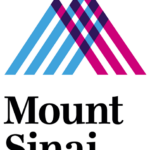Hospitals, including its providers and patients, are at the end of a complex healthcare supply chain. When issues occur upstream––including medication, medical supply, and medical equipment shortages – they inevitably cascade down to impact patients. In other situations, hospitals experience an oversupply of certain products or lose time responding to recalls, often to the detriment of their financial bottom line. There is a better way to manage hospital supply chains. With modern interoperable systems, data centralization, and a wide-angle view of inventory and usage trends, hospitals can proactively switch from a “push” to a “pull” model for supply chain management. This allows for active real-time inventory management and sourcing based on each hospital’s specific needs. With these systems in place, hospitals can gain improved upstream visibility to anticipate system or industry-wide challenges.
How do hospital systems take charge?
Lay the foundation with data centralization and interoperability
The first step is to digitally connect inventory management systems to achieve full interoperability. Historically, hospital systems have managed an array of disconnected systems, each with a different function and goal. The result was a system where data is collected, but then kept siloed. For example, an electronic health record ordering system might not “speak” to the inventory system, keeping their data separated. This approach limits visibility into what is truly happening with inventory. It also reduces system-wide efficiency. In the past, this was our only option. Today, technology makes it possible to link systems together to create an interoperable environment in which data is exchanged and organized with the goal of generating meaningful and actionable insights.
Interoperability starts with a strategy for data centralization. Once systems are connected and speaking to each other, there needs to be a plan for how information is shared and used. Data centralization determines how and when data should flow between systems and enables the creation of a unified data repository (also known as a data lake). Ultimately, data centralization and interoperability paired together can help hospital systems achieve integration and real-time data exchange throughout their networks.
To better understand the benefits of an interoperable system with a centralized data strategy, imagine a family getting dinner at a food court. Many food courts have a dozen or more vendors, each with its own menu, prices, and queue for ordering. For the family, navigating the food court can be a challenge because it requires scoping out the different vendors, interpreting and evaluating distinct menus, and then waiting in multiple lines. This situation is ripe for problems if members of the family have different dietary needs or struggle to coordinate. Hospital systems have evolved in a similar way, with dozens of different software systems and vendors operating in parallel. It’s impossible to glean a real-time overview of everything that’s happening. But imagine if that disparate vendor information was consolidated into one centralized menu for interpretation and ordering. A family could plan and buy dinner far more efficiently and holistically. Likewise, a hospital system can more seamlessly and purposefully manage its medical supplies and inventory. The information is stored in one place and visible through a central dashboard.
Track every product at every step for end-to-end visibility
Inventory visibility and tracking are critical to the success of interoperable systems. Hospital systems are complex, dynamic environments, and when inventory information is not complete or accurate, managing the supply chain becomes more challenging.
In an ideal scenario, visibility would be end-to-end and truly comprehensive, providing data from the manufacturer, through the hospital system, and up to the point of care. This shift is already underway, driven by the increasing use of RFID-based systems that enable individual product-specific tracking. While industries such as retail have fully embraced RFID technology, healthcare supply chains have continued to use standard technologies, like barcodes, to track critical goods with a high degree of manual input. With technology like RFID, data can flow into systems with minimal manual input, improving accuracy and removing steps that can be demanding.
On its own, end-to-end visibility allows for collaboration across departments and can reduce the burden on staff. Multiple research studies have suggested that medical staff, such as nurses, spend a notable chunk of their working time tracking down items within a facility. Now imagine the cost- and time-savings of being able to check across departments for items via software instead of having to chase the item down. With expanded inventory visibility, hospital systems can maximize their current inventory, redistributing limited supplies to where they are needed most and anticipating where demand will change.
Turn your data into business insights, optimizing current inventory and guiding accurate forecasting
Combining it all together –– interoperability, data centralization, and inventory visibility – can give hospital systems an opportunity to turn vast amounts of data into actionable business insights that support clinical, financial, and operational excellence while driving supply chain efficiency.
Beginning in operations, a centralized data strategy can give operations staff visibility into the trends behind supply use and purchasing, highlighting opportunities for increased efficiency and reduced inventory costs. In the clinical space, this approach can streamline workflows and save time, connecting teams across the hospital through visibility into the location and status of supply. Efficiencies in operations and the clinic both correlate to a better return on investment and bottom line, saving work hours and medication or equipment costs. This includes more efficient and effective forecasting via automated solutions, which will help hospital staff succeed without requiring more of their time.
From a supply chain perspective, these advancements culminate in a “pull” approach. Hospitals obtain exactly what they need – no more or less – by making inventory decisions based on their own historical data and trends, as opposed to gut feelings or worst-case scenarios. The resulting models increase flexibility and illuminate optimizations and efficiencies throughout the hospital.
The value of these confident, accurate models is apparent in the face of ongoing global disruptions to supply chains. We know that disruptions will continue. How we handle these future disruptions will be dependent on our ability to link together and visualize the supply chain from point of care to manufacturer, as well as our ability to collaborate across industries and systems. An efficient supply chain can allow us to prepare for and anticipate problems.
Stay focused on the end goal: Keeping patients safe.
It’s not all about supply chains and costs. A hospital without overarching visibility may encounter delays in serving its patients or trigger errors in the management of important items, like medications. We often hear of these issues in operating rooms, with surgeries delayed because key medical supplies or medications are missing from the anesthesia carts or cabinets, or from medical staff who must step away from patients to look for inventory. None of this is conducive to quality care or a positive hospital experience.
It’s time to flip the healthcare supply chain on its head, prioritizing patient safety and working backward to ensure a hospital’s inventory of drugs, devices, and other medical supplies are efficiently managed and that resources are strategically “pulled” into the hospital system when and where they’re needed. It all starts with data management and intelligence, with healthcare systems accurately collating real-time data in one central location. This, in turn, supports effective forecasting and other actionable insights.
Ultimately, the industry has been demanding this shift toward an interoperable and centralized approach to supply, but that first step away from the status quo can be daunting. One of the best ways to take charge of the supply chain is to embrace the change and embark on the journey with a partner who can serve as a guide and advisor along the way. Ultimately, innovative solutions available today can bridge gaps across different brands, connecting hardware and software to manage the hospital’s needs today and forecast for the future.







